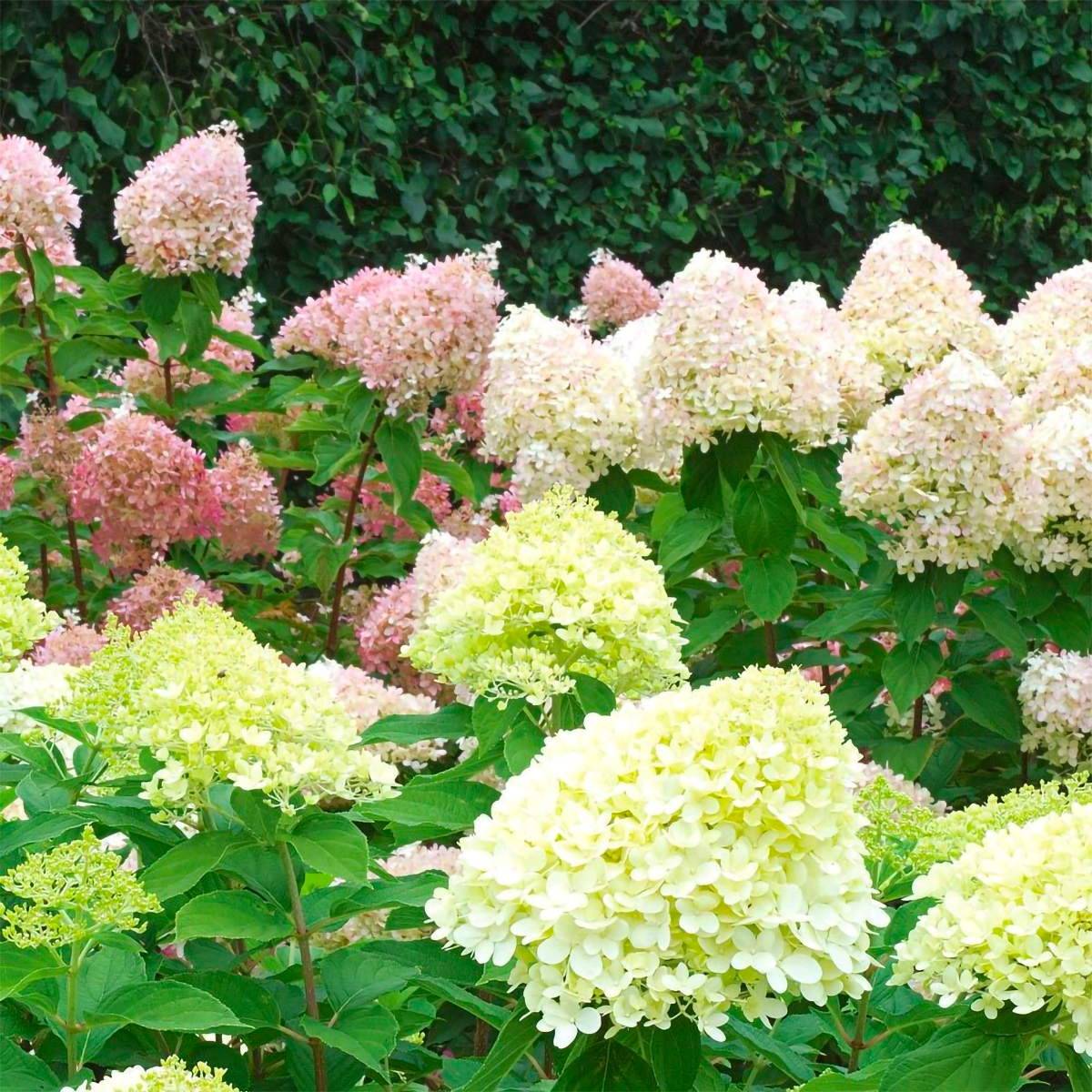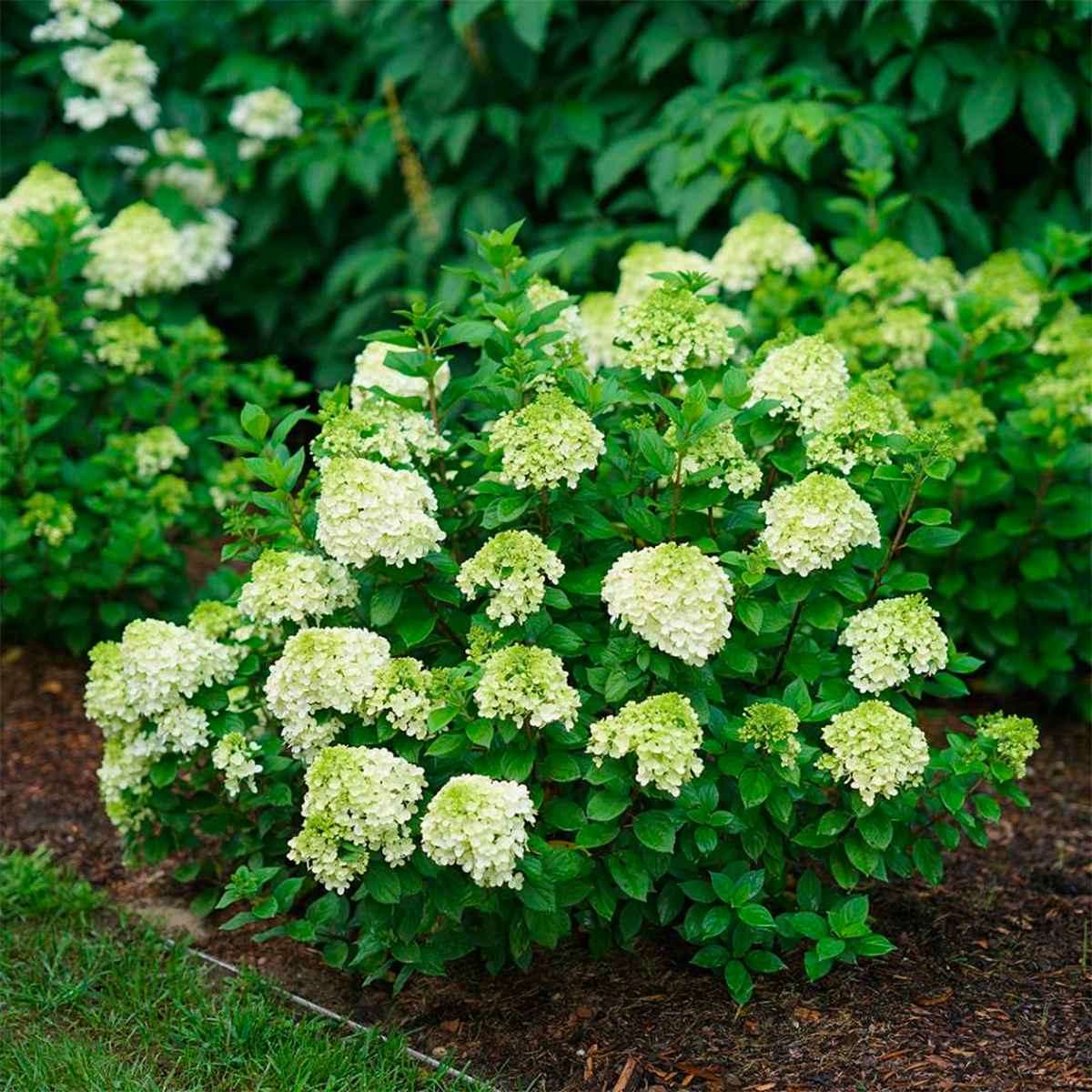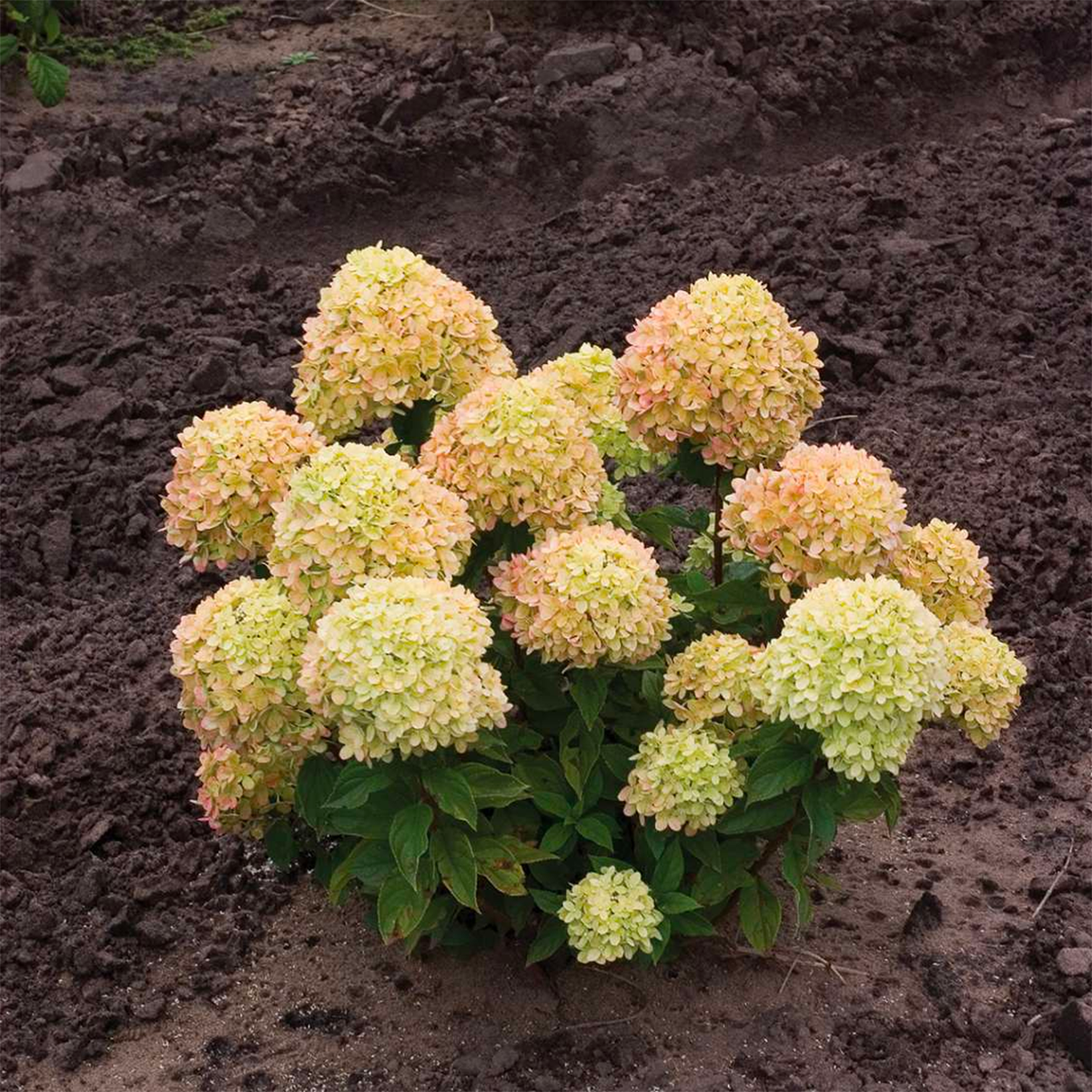As a whole has a few distinct identifying physical features. Each is deciduous, mostly with narrow, oval-shaped leaves called lanceolate. They all have many tightly clustered flowers with five sepals and five petals. These similarities are often as far as it goes when it comes to the genus. This is great news for designers and gardeners looking for variety in their landscapes.
Best grown in organically rich, medium moisture, well-drained soils in full sun to part shade. Can be trained as a small single trunk tree, but is best grown as a large, multi-stemmed shrub. May display best shrub form if regularly pruned to a height of 6-10’ tall. This is one of the most winter hardy of the hydrangeas. It thrives in urban conditions. Bloom occurs on current season’s growth, so prune as needed in late winter to early spring.
Larger flower panicles can be obtained by thinning the plants to 5-10 primary shoots. In full bloom, the weight of the flower panicles will typically cause the branches to arch downward.
Hydrangea paniculata, commonly called panicle hydrangea, is a vigorous, upright, rapid-growing, somewhat coarsely textured, deciduous shrub that is native to China and Japan. It typically grows to 8-15’ (less frequently to 25’) tall, and features oval to ovate dark green leaves and upright, sharply-pointed, conical, terminal flower panicles (to 6-8” long) containing both fertile and sterile flowers (mostly non-showy fertile flowers) that bloom from mid-summer into fall.
The genus name Hydrangea comes from hydor meaning «water» and aggeion meaning «vessel», in reference to the cup-like capsular fruit.
‘Jane’, commonly sold under the trade name of LITTLE LIME, is a compact cultivar that typically grows in an upright rounded mound to 3-5′ tall and as wide. It is the product of an open pollination in a planned breeding program that took place in Grand Haven, Michigan in August of 2005 between Hydrangea paniculata ‘Limelight Variegated’ (female parent) and an unknown selection of Hydrangea paniculata (male parent). ‘Jane’ is particularly noted for its large mophead type inflorescences (panicles to 5″ tall by 4″ wide), with sterile flowers emerging soft light green but maturing to pink and burgundy in fall. Additional features of interest include compact, upright-mounded shape, free branching habit and strong stems which hold the panicles upright with no drooping. Flowers typically bloom from July through September. Ovate, serrulate, dark green leaves (to 2 1/2” long) are attractive during the growing season, but produce generally undistinguished fall color. Flower panicles may be cut for fresh arrangements or for drying, or may be left on the plant where they often persist into winter. U. S. Plant Patent PP22,330 was issued on December 13, 2011.




